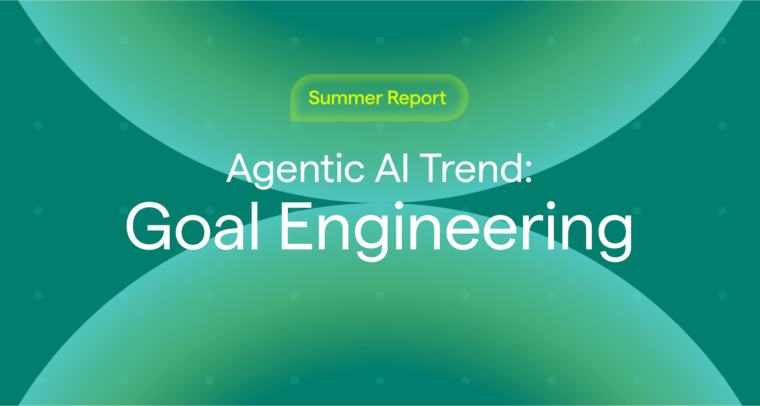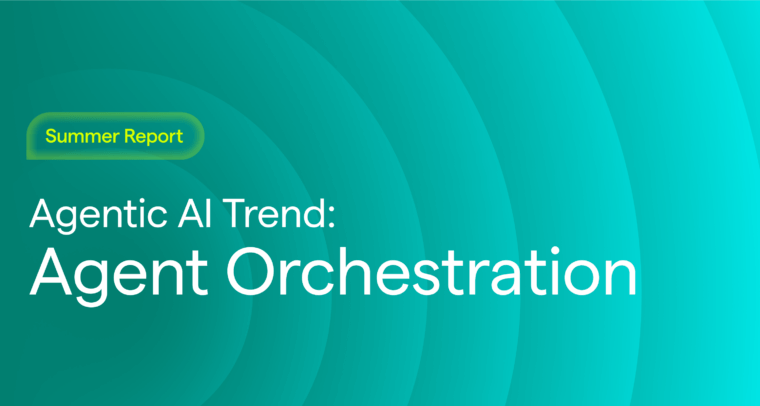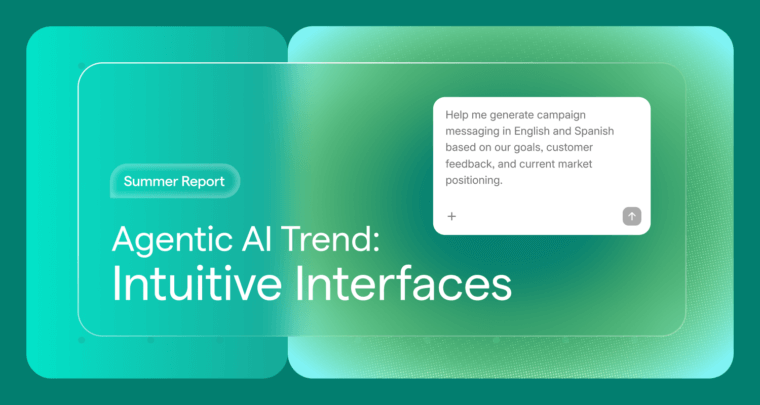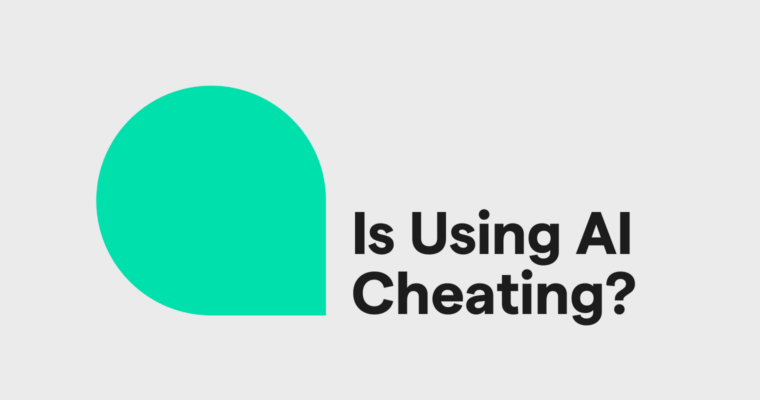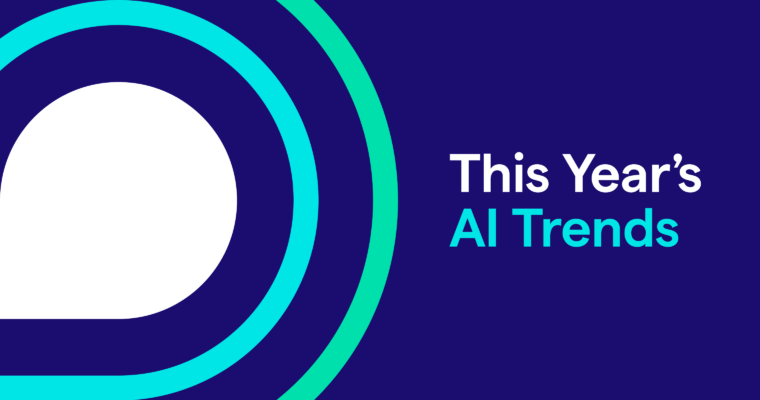
While we’re all pretty familiar with artificial intelligence by now, the truth is that the tech itself is still new. Every day, we discover new applications and uses for this groundbreaking science, while existing methods improve and evolve on their own. As with all open-ended styles, popular usage of AI shifts with time—in other words, new AI trends are constantly coming and going.
Here are Grammarly’s top 14 trends for AI for 2025 to help you stay on the cutting edge of this frontier tech.
1 Generic AI text loses value
Generative AI is a victim of its own success: It’s become so popular that it has reached a saturation point, and readers are starting to catch on. That (in conjunction with AI trend #3) will lead to a reemergence of originality and creativity in content creation—but don’t expect AI to take a backseat.
We’re seeing the rise of a hybrid approach: using AI to assist in writing but not to replace the writer’s voice. AI like Grammarly works great as a copilot, helping you from the beginning to the end of your writing. Wholesale blocks of AI-generated text will feel more generic and less valuable than human content augmented by AI.
2 Native UI with AI
AI is especially adept at fueling experiences that feel intuitive and natural. That’s why we’re seeing a rise in AI-driven user interfaces (UI) that make it easier for everyone to interact with their favorite devices. This is most evident in the ease with which AI accommodates text, voice, and visual input to create a unified experience across different devices or apps. And this is just the beginning—one paper from Fordham University predicts the next step is emotionally adaptive interfaces.
User interfaces are evolving as AI-driven designs embrace real-time personalization. Imagine an AI assistant that picks up on your frustration and responds with clearer guidance or a more empathetic tone. These advancements create smoother interactions and forge deeper connections, making technology feel like an intuitive extension of yourself.
3 Advancements in AI detection
AI detection continues to be a hot topic in academic settings. While so-called AI detectors proliferated in 2024, none have proven consistently effective at detecting AI writing. And with the academic reputations of millions of students on the line, false accusations can be devastating.
As AI tech evolves, so too must the methods for detecting it. For example, Grammarly’s new Authorship feature is helping students show their work and educators identify AI writing in school assignments. Grammarly Authorship lets you generate a report about where your writing came from. What did you write yourself, what did you generate with AI, and what did you paste into your doc? Of course, you choose when Authorship observes your writing process.
As the academic world navigates this complex terrain, institutions must strike a delicate balance: holding students accountable for demonstrating subject comprehension and writing originality while empowering them to use AI tools responsibly and ethically.
4 AI search reaches a new level
Search engines have always been intrinsically tied to AI—this is true even for the basic algorithms of their early years. But Google took AI searches to the next level with Google Gemini 2.0, launched in December 2024. This new context-aware search shows the world just how intuitive AI can be. Googling as a skill will evolve as AI learns to adapt to how humans naturally search.
For starters, AI can better understand the searcher’s intent across different inputs like typing or speaking. Generally, AI trends are shifting to incorporate more accurate, nuanced, and conversational search experiences that get to the root of what people are looking for. Content creators should start optimizing content for AI searches in addition to traditional SEO.
5 AI video becomes viable
We’ve come a long way from the funny, glitchy AI videos of late 2023. In 2025, AI-generated video content has matured into a powerful and practical tool for businesses and creators alike. With advancements in AI rendering, motion synthesis, and generative design, AI videos are becoming photorealistic, cost-effective, and highly customizable.
This year, we expect to see a significant uptick in AI-generated video applications across industries. Businesses can use generative video for a wide range of purposes, such as creating polished corporate presentations, training videos, and even personalized marketing campaigns. Social media, in particular, will benefit from AI’s ability to produce dynamic, eye-catching video content at scale, helping brands engage their audiences with fewer resources.
Additionally, AI video is transforming creative workflows for filmmakers and content creators. It simplifies tasks like background generation, character animation, and scene design, allowing creators to focus on storytelling rather than tedious production work. Platforms like Runway and Synthesia are already leading the charge, enabling creators to bring their visions to life faster than ever.
6 Transparency in customer experiences with AI
Many brands use AI across customer touchpoints in ways that make it difficult for consumers to understand what is human and what is AI. In 2025, we expect consumers to demand more transparency from companies about where they use AI in customer interactions.
Transparency is a core pillar of responsible AI and will be increasingly important as agentic AI drives more product and customer experiences. It is clear that consumers are increasingly comfortable interacting with AI but want to know when AI has generated experiences and content. As highlighted in our 2025 AI Shortlist, companies prioritizing transparency will build trust and credibility in a landscape where the lines between humans and AI are increasingly blurry.
7 More advanced reasoning
One ever-present AI trend is that it’s always getting better, thanks to its innate reliance on machine learning and deep learning. In 2025, this means specialized AI tools with advanced reasoning. Sectors like law, finance, and healthcare will see powerful, bespoke AI tools made to tackle complex tasks.
For the legal field, new AI models will analyze documents, predict case outcomes, and assist in contract drafting by understanding legal language and precedent.
In healthcare, they will enhance diagnostic accuracy, treatment planning, and personalized medicine through medical data analysis.
They will aid risk assessment, fraud detection, and algorithmic trading in finance by processing large datasets. These systems leverage natural language processing and machine learning to provide accurate insights, allowing professionals to focus on strategic tasks.
However, ethical use, transparency, and robustness—and appropriate guardrails—are essential as these models increasingly influence high-stakes decisions.
8 AI talking to AI
For some tasks, especially the menial and mundane, the only thing that can match AI’s speed and accuracy is another AI. Collaborating AI agents are streamlining workflows by reducing human intervention, which simultaneously frees up humans for the more complicated tasks AI can’t handle yet. AI-to-AI communication will take an increased role in logistics, scheduling, and other repetitive tasks.
In 2025, humans will spend more time building workflows, ensuring they are optimized, and creating checks and balances for the systems. Far from taking human jobs, this evolution of AI will free humans up to do creative and strategic work and spend their time building relationships—something AI cannot do.
9 Return of predictive AI
In 2024, there was a significant rise in the use of generative AI, which is designed for creation. Although these tools are powerful, companies have discovered that they can be expensive and not entirely dependable for their processes. As a result, predictive AI—which examines data to identify trends and make forecasts—is likely to experience a comeback in the business sector.
These tools have been essential for companies for several years due to their consistency, lower resource requirements, and ability to produce measurable results. As businesses aim to enhance their return on investment (ROI) from AI, we anticipate that they will concentrate on adopting tools and models that effectively boost efficiency, lower costs, and reduce risks.
10 SLMs surge
A small language model (SLM) is a streamlined model featuring a more efficient neural network, which comes with a trade-off in processing power. These models are attractive because they can operate locally instead of depending on cloud services for data processing, enhancing security.
SLMs are particularly advantageous in sectors where data confidentiality is paramount, such as in healthcare and finance. Additionally, improvements in optimization enable SLMs to provide performance levels comparable to large language models (LLMs) within specific areas. This quality makes them particularly beneficial for small businesses and specialized applications where the expense of an LLM is too high.
Ultimately, SLMs are poised to play a crucial role in promoting widespread access to and adoption of AI technology. They can facilitate real-time, low-latency applications, including wearable tech, autonomous systems, and augmented reality experiences. We might reach a point where AI operates at the speed of human cognition, potentially offering anticipatory or predictive assistance.
11 “AI” becomes an outdated marketing term
As we enter 2025, most AI applications have reached parity in terms of performance. While 2024 was the year of many tools and services marketing themselves as being “with AI,” 2025 will see a slow return to more traditional points of differentiation.
Consumers expect that nearly all commercial experiences and tools involve some form of AI, and the excitement has worn off. Practical applications will take precedence over broad marketing claims, forcing brands to focus on the results or solutions their offerings deliver rather than the tech powering them.
12 Bridging the digital and physical
To date, creative and knowledge workers have received the biggest boost from AI. Physical manufacturing, hardware, and architecture are set to receive a massive boost from AI this year.
Artificial intelligence is transforming manufacturing by streamlining production and enhancing precision. Predictive maintenance reduces downtime by identifying potential machinery problems early, while autonomous robots boost efficiency. AI-driven 3D printing allows for mass customization, making it feasible to scale customized product production.
In hardware design, AI can concept and evaluate numerous options to create innovative components for industries like aerospace and automotive, resulting in lighter, stronger, and more sustainable products.
Architecture also benefits from AI, which can design eco-friendly buildings that optimize energy efficiency and material use. The integration of physical and digital strategies powered by AI will have a transformative impact on these sectors.
13 Emotion AI
Many people think the difference between AI and the human mind is emotion, but really that gap gets slimmer every day. “Emotion AI” refers to the increasing capability of AI to understand or at least mimic human emotions, and it’s progressing in leaps and bounds.
The more AI develops what presents as empathy, the more useful it will be in applications that require human interaction. AI’s role in customer support, education, healthcare, marketing, and content creation will improve in 2025 and give rise to a wide array of human-like experiences.
Grammarly’s tone suggestions already leverage this technology. This feature assesses your writing and offers suggestions to help you achieve your desired tone by predicting how readers will react.
14 Prompt engineering becomes obsolete
The term “prompt engineering” has become the target of mockery over the past year, as early adopters have positioned themselves as experts in this emerging skill. However, for many novice users, understanding how to write an AI prompt has been a significant barrier to generating the results they’re looking for.
As we discussed in trend #2, AI tools have dramatically improved their understanding of human interactions. Removing this barrier will dramatically increase AI adoption and help novice users realize the full potential of these tools to deliver precisely what they need.
The latest trends in AI
While AI doesn’t seem as new as it did a few years ago, it’s still quite exciting. As more and more companies adopt AI strategies into their business, the styles and applications of AI grow, expand, and accommodate more diverse needs. While these 2025 AI trends reflect the now, they’re indicative of the greater rise of AI as it becomes a part of everyone’s lives.
If you’d like to learn more about integrating AI into your business or are looking for more ways to use it to improve your current workflow, check out our free 2025 AI Shortlist, which provides a more enterprise-centric look at the latest trends in AI.
